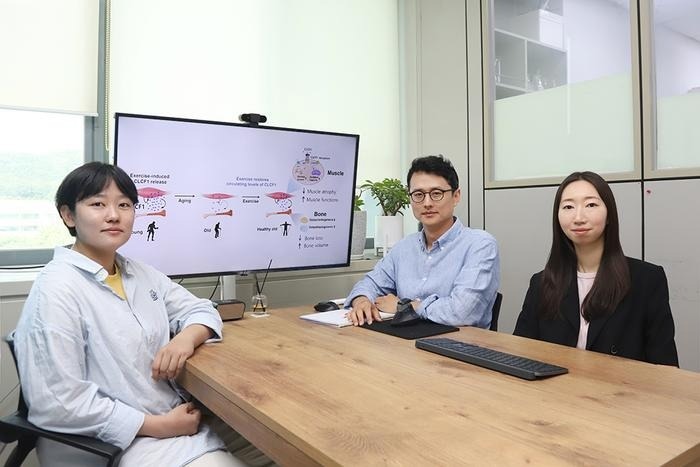Reviewed by Lexie CornerJun 23 2025
Although everyone knows that “exercise is good for your health,” few people can clearly explain how and why it benefits the body.
 Group photo of the research team. Image Credit: Korea Research Institute of Bioscience and Biotechnology
Group photo of the research team. Image Credit: Korea Research Institute of Bioscience and Biotechnology
A key protein, CLCF1 (cardiotrophin-like cytokine factor 1), has been identified by a joint research team. The team was led by Professor Nak-Sung Kim of Chonnam National University and Dr. Yong Ryoul Yang of the Aging Convergence Research Group at the Korea Research Institute of Bioscience and Biotechnology (KRIBB, President: Seok-Yoon Kwon). This protein plays an important role in delivering the health effects of physical activity.
The researchers found that during exercise, muscles release CLCF1. This protein supports muscle and bone health and helps slow musculoskeletal aging.
To explore how CLCF1 responds to exercise and aging, the researchers divided volunteers into younger and older groups. They monitored changes in blood levels of CLCF1 after physical activity. In younger participants, CLCF1 levels rose significantly after just one session. In older adults, the increase was only seen after more than 12 weeks of regular exercise.
The researchers also studied aged mice. When CLCF1 was given to older mice, their muscle strength and bone density improved. But when CLCF1 activity was blocked, exercise had little effect. This showed that the protein is necessary for the positive outcomes of physical activity.
Further research found that CLCF1 enhances mitochondrial function in muscle cells. It also reduces the production of bone-resorbing osteoclasts and promotes the formation of bone-building osteoblasts. This is the first scientific evidence showing that changes in protein production may explain why exercise becomes less effective with age.
This research provides a biological basis for why exercise becomes less effective with age, and it lays the groundwork for developing new therapeutic strategies for healthy aging. In particular, the findings offer new directions for treating age-related sarcopenia and osteoporosis.
Dr. Yong Ryoul Yang, Korea Research Institute of Bioscience and Biotechnology
Source:
Journal reference:
Kang, J. S., et al. (2025) Exercise-induced CLCF1 attenuates age-related muscle and bone decline in mice. Nature Communications. doi.org/10.1038/s41467-025-59959-w.